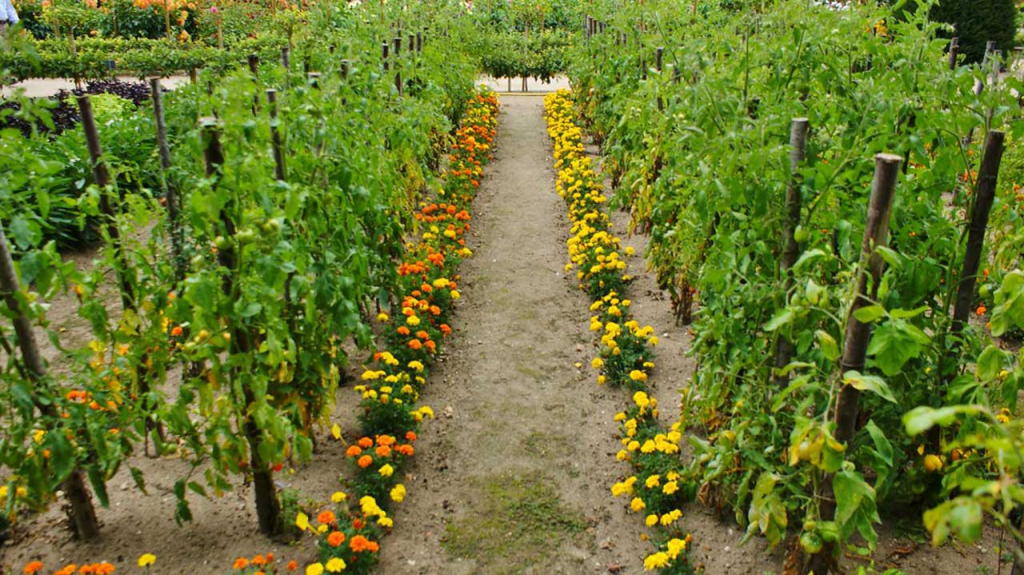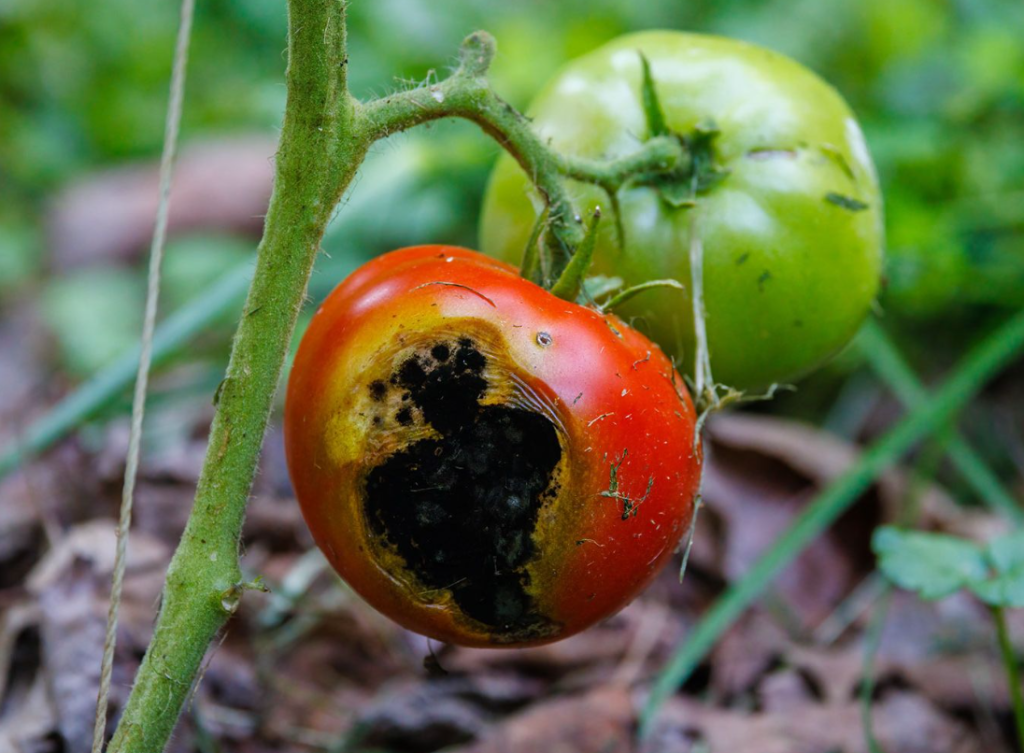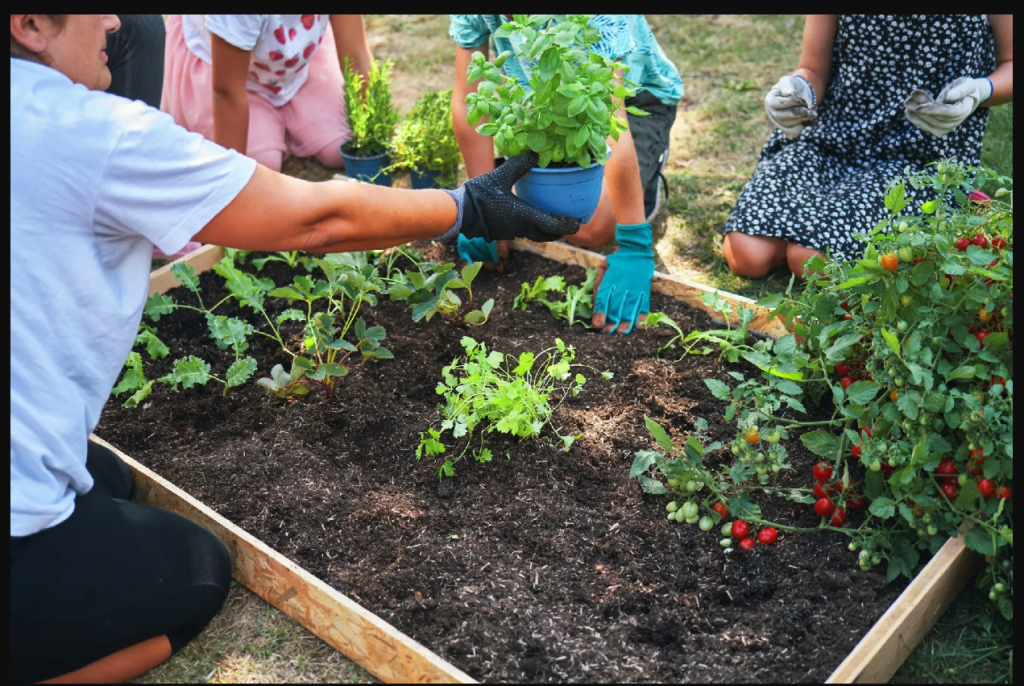Ready to take your garden to the next level? This companion planting guide walks you through the strategic plant pairings for healthy and productive growth.
Introduction
Companion planting is one of the oldest and most effective gardening techniques, passed down from one generation to the next over the years. The idea is pretty simple: some plants just grow better together.
Think of them like garden BFFs; some plants are paired together to support, protect, and even feed one another in subtle ways that make a big difference over time. Whether you’re growing herbs, fruits, or flowers, learning how to strategically match the right plant partners can maximize your growth and yield, and lead to fewer pests.
In this companion planting guide, we’ll walk you through the basics, the best pairings, what to avoid, and everything in between. So, if you’re ready to explore the world of healthy plant pairings, this is your ultimate starting point.
Why Companion Planting Matters in Gardening

So, why go through the effort of pairing your plants? Because it works. The benefits of companion planting are numerous and can transform your garden into a flourishing paradise. Some benefits include: natural pest control, improved growth, enhanced flavor, enriched soil, and overall healthier gardens.
Sustainable gardening methods, such as companion planting, can create a balanced and biodiverse garden space. When one plant naturally repels pests or improves soil quality, another nearby can benefit. It’s like mimicking nature’s strategies to cultivate a healthier garden.
Core Principles for Effective Companion Planting
Before you start matching veggies and herbs like a pro, you’d need to understand the underlying plant pairing principles that make it all work.
Nutrient exchange
Some plants, especially legumes, fix nitrogen in the soil, while others, like tomatoes and corn, take a lot from the soil. Match givers and takers.
Timing
Fast-growing plants like lettuce can be planted next to slower-growing ones like broccoli. They’ll harvest before the slow growers need room.
Growth compatibility
Think tall vs. sprawling plants. Let sun-lovers stay in the spotlight and shade-tolerant ones hang out below.
Spatial considerations
Tall plants can shade shorter ones, while sprawling plants can provide ground cover. It’s all about maximizing garden space without causing crowding and preventing competition for nutrients and water.
Getting familiar with garden plant compatibility takes time, but these principles will help guide your layout and choices early on for a thriving garden.
Best Companion Plant Combinations for Thriving Gardens

Looking for the best companion plant combinations tried, tested, and loved by gardeners around the world? Here are the top 3 winning combinations:
Tomatoes + Basil
Not only do they thrive as neighbors, but Basil improves tomato’s flavor. That means your caprese salads are going to be even tastier.
Carrots + Onions
While carrots grow deep in the soil, onions stay above and help repel pests that target carrots, making this a perfect vegetable garden pairing.
Corn + Beans + Squash
If you’re looking for something more exotic, you should try out the legendary Native American Three Sisters planting Method. This synergistic combo is genius: corn provides support for climbing beans, beans fix nitrogen and enrich the soil, and squash shades the ground to keep weeds down.
Play around with these combinations and see how they boost your garden’s productivity.
Pairing Herbs and Vegetables for Enhanced Growth

Herb companion planting techniques allow you to plant herbs and vegetables under similar growing conditions, such as sunlight and moisture.
Try these:
- Dill + Cucumbers: Dill attracts beneficial insects and promotes healthy cucumber growth and flavor.
- Rosemary + Cabbage: Rosemary helps fend off cabbage moths and allows the cabbage to flourish without fear of pest infestations.
- Cilantro + Spinach (or Lettuce): Cilantro allows organic pest management while improving the flavors of the vegetables.
Ultimately, herbs and vegetables pairing in your garden will bring flavor, fragrance, and often act as natural bodyguards for your veggies.
Fruit and Flower Pairings for a Productive Garden
Pairing fruit and flowers doesn’t just create a beautiful garden; it also makes it a productive one. Strategic fruit and flower combinations can protect your crops and encourage pollination.
Some top picks:
- Strawberries + Nasturtiums: Nasturtiums attract ladybugs that help defend strawberries against pests like aphids.
- Fruit Trees + Marigolds: Marigolds help with nematode and insect control. Planting marigolds with fruit trees is a pollinator-friendly gardening tip to attract pollinators to visit your fruit plants and increase your fruit yield.
- Borage + Berries: Companion planting flowers like Borage near your berry bushes attracts bees and can help boost your strawberry yields.
Plants to Avoid Pairing in Your Garden

Not all plants get along. So, if you want your garden to flourish, knowing the plants to avoid pairing is just as important as knowing the good ones. This is also really important in preventing garden diseases.
Examples:
- Potatoes + Tomatoes: They may seem like natural partners because they have similar needs, but they are prone to certain diseases, like blight, that can be spread faster between them.
- Cabbage + Strawberries: They fight over soil nutrients and space.
- Basil + Rue (or Sage): These herbs don’t mix, as they can slow down each other’s growth.
Understanding incompatible garden plants would help you avoid wasted time and effort.
Seasonal Strategies for Successful Companion Planting
Each season is unique, and that’s why timing companion planting is important—knowing when to plant what can make or break your garden layout.
Here’s a basic guide for seasonal gardening strategies:
- Spring: Pair fast-growing crops like radishes and lettuce with slow-growing plants like tomatoes. The radishes finish early, freeing up space.
- Summer: Match heat-lovers like peppers and eggplants. Add heat-tolerant herbs to repel pests.
- Fall: Root crops like carrots and beets do well in cooler temperatures.
With year-round garden planning, you can optimize space and resources and make sure that your garden is always productive.
Essential Tips for Successful Companion Planting

Want to take your companion planting game to the next level? Use these actionable companion planting tips.
- Planning layouts: Research the plants you want to combine, and map out what goes where using simple grid paper or an app. Use good garden planning methods to avoid crowding.
- Maintaining soil health: Great soil equals great plants. Prioritize soil health management by composting and adding organic matter.
- Regular monitoring: Nature’s unpredictable. Keep an eye out for any issues, like pest invasions or stunted growth, before they become major problems.
- Experimenting with various plant combinations: Sometimes, the most unexpected pairings yield remarkable results.
Common Mistakes in Companion Planting (and How to Avoid Them)
Even seasoned gardeners can make a few classic gardening mistakes when it comes to companion planting. Here are some common mistakes and how to avoid them.
Overcrowding
Keep to the recommended spacing for each plant. This is important in avoiding plant competition for sunlight, water, and nutrients.
Ignoring Plant-specific Needs
Don’t assume that all plants have the same sun, water, growth rates, and space needs.
Pairing Incompatibles
Double-check every pairing. Always refer to this guide to avoid common companion planting errors.
With a bit of planning and observation, you can successfully avoid these common mistakes.
Real-Life Success Stories of Companion Planting

Let’s look at a few real-life organic farming success stories. Many organic farmers swear by companion planting, and here are some companion planting examples from their gardens to inspire your own.
In a community garden, farmers grew fennel and lavender together with their vegetables. It attracted beneficial insects, controlled pests, and provided the community with a productive garden.
One organic farmer noticed that using clover as a ground cover with corn helped fix nitrogen in the soil, leading to stronger corn stalks and richer soil.
These garden case studies show you the benefits of synergistic relationships among plants and even people.
Conclusion: Mastering Companion Planting for a Thriving Garden
Mastering companion planting allows you to save space, boost yield, control pests, enhance flavors, and overall, create a thriving, self-supporting mini-ecosystem on your balcony or full backyard garden.
So, embrace sustainable garden practices, do your research, and don’t be afraid to try something new. Because in the world of companion planting, the best results and gardening success often come from unexpected partnerships.


